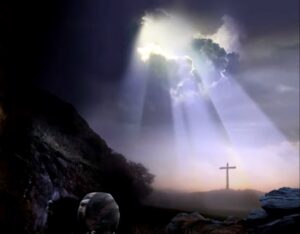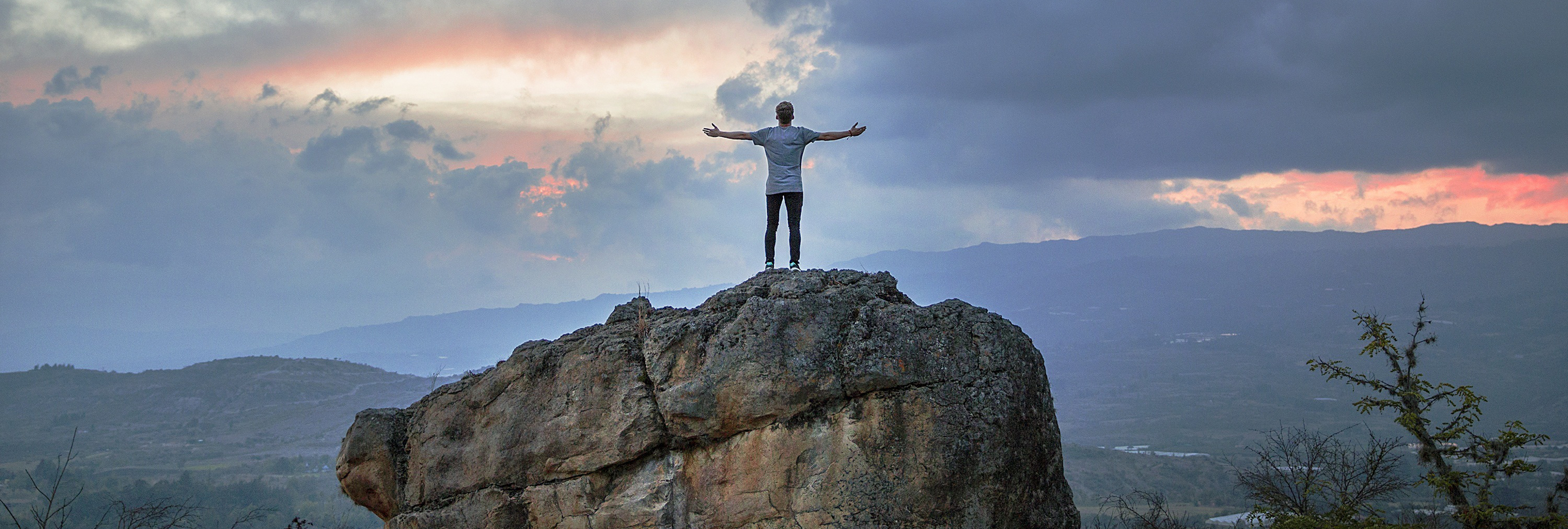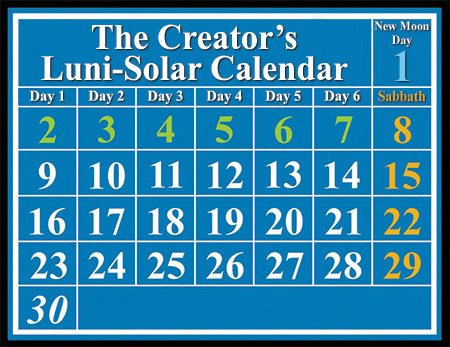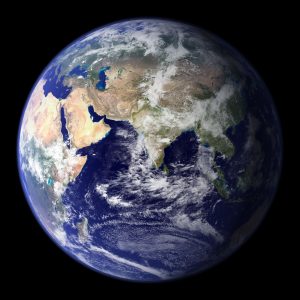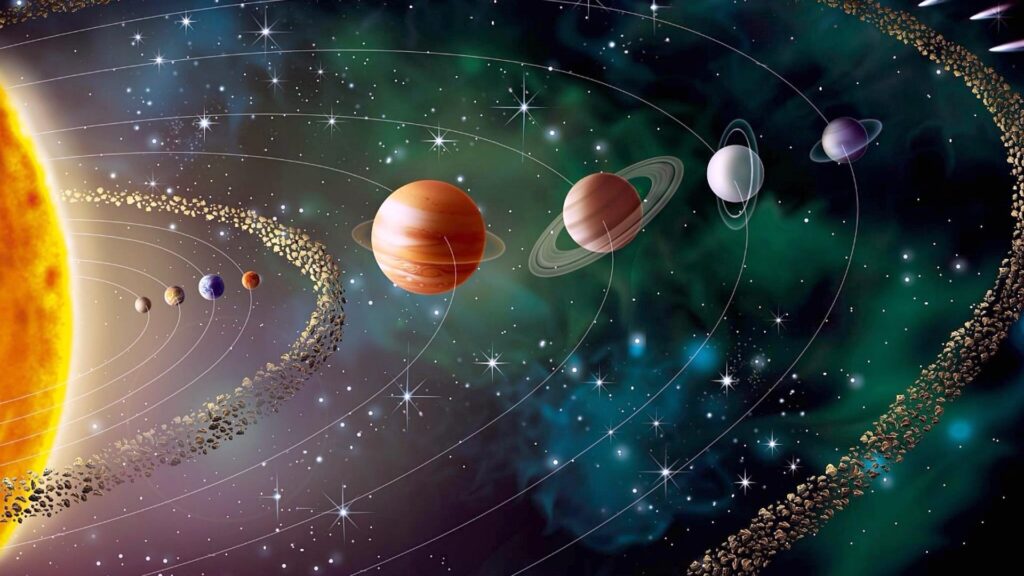For over the past two thousand years people have heard about wars and rumours of war. Nations have risen against nations and kingdom against kingdom. There have been famines, pestilences and earthquakes all around the world.
However, up to the twentieth century, not everybody was either aware or concerned about these things. Life continued as normal for most, for the wars, famines, pestilences and earthquakes did not specifically affect all the people at any given time. However, for those whom were affected, it would have been a time of sorrows.
By the 20th century, people began to communicate worldwide. People were better educated and became more aware of the world around them. However times of sorrow prevailed. Wars and rumours of war, famines, pestilences and earthquakes also prevailed.
Wars
The worst wars to date were WWW 1 and WWW 2.
World War One (WWWI) disrupted many countries around the world. The lives lost and the hardship that followed was a time of sorrow for millions of people. It was declared to be the war to end all wars, but it wasn’t the case.
World War Two (WWWII) was a horrendous waste of lives. About 4% of the worlds population had shattered lives, whilst the rest had their lives changed forever. Although many lives were changed for the better over time, peace was and still is elusive.
Major conflicts and wars of the 20th Century:
1899–1902, Boer War, about 46,000 deaths and 30,000 wounded.
1914–1918, First World War, about 20 million deaths and 21 million wounded.
1917–1922, Russian Civil War, about 259,000 deaths and over 1 million wounded.
1919, Third Afghan War, about 2,000 deaths and over 600 wounded.
1919–1921, Irish War of Independence, about 2,300 deaths, countless wounded.
1922–1923, Irish Civil War, about 1,700 deaths.
1936–1939, Spanish Civil War, between 465,000 and 500,000 deaths.
1936–1939, Arab Revolt in Palestine, about 5,874 deaths and 15,500 wounded.
1939–1945, Second World War, 70 to 85 million deaths and countless people wounded.
1944–1948, Jewish insurgency in Mandatory Palestine, about 260 deaths and 912 wounded.
1947, Partition of India, there were about 200,000 to 2 million deaths, whilst 10 to 20 million people were displaced.
1948 onwards, Israeli-Palestinian Conflict, more than 31,000 deaths and 32,000 wounded.
1948–1960, Malayan Emergency, about 8,575 deaths and 3,685 wounded.
1949, Yangtze Incident, 42 deaths and 73 wounded.
1950–1953, Korean War, just over 4 million deaths and 1.25 million wounded.
1952–1960, Kenya Emergency, about 23,000 deaths.
1955–1959, Cyprus Emergency, 547 deaths.
1955–1975, Vietnam War, about 1.450 million to 3.595 million deaths and countless wounded.
1956, Suez Crisis, about 4,000 deaths and over 5,800 wounded.
1962–1963, Brunei Revolt, 46 deaths.
1963–1966, Indonesian Confrontation, 838 deaths, 402 wounded.
1963–1967, Aden Emergency, 491 deaths, 2,282 wounded.
1968–1998, The Troubles (Northern Ireland), 3,532 deaths, over 47,500 wounded.
1982, Falklands War, 904 deaths, 2,432 wounded.
1990–1991, Gulf War, up to 54,000 deaths, over 75,000 wounded.
1991–2002, Sierra Leone Civil War, 50,000 to 70,000 causalities, 2.5 million people displaced.
1992–1995, Bosnian War, about 101,000 deaths, over 2 million people displaced.
1998–1999, Kosovo War, over 13,500 deaths, 1.2 to 1.45 million people displaced.
Major conflicts and wars of 21st Century:
2001–2014, War in Afghanistan, over 241,000 deaths.
2003–2011, Iraq War, figures are disputed, could be 268,000 to 295,000 deaths.
2011–present, Libya Conflict, figures are disputed, up to 30,000 deaths.
2011–present, Syria Conflict, figures are disputed, could be 500,000 to 600,000 deaths, about 11.5 million people displaced.
2014–present, Yemen Conflict, about 377,000 deaths.
2014–present, Global Coalition to Defeat ISIS, over 11,000 deaths, about 1.2 million people displaced.
Famines
During the 20th century an estimated 70 to 120 million people died from famines across the world. In the 21st century up till 2021 about 690 million were starving. In 2021 it was estimated that 41 million people were at risk of starving to death.
Famines in the 20th Century:
1921-1922, Soviet Union famine, about 9 million people died.
Massive crop failures due to drought were largely ignored by Vladimir Lenin’s government, which did not respond until it was too late.
1927, North-West China famine, around 3 to 6 million people died.
The famine was triggered by drought and made worse by local warlords and harsh taxes.
1929, China (Hunan) famine, about 2 million people died because of drought and conflict.
1932–1934, Soviet Union (Ukraine) famine, between 7 to 8 million deaths.
People died as a result of Josef Stalin’s massive industrialisation programme in which the government seized grain for exports. It needed the hard currency to buy industrial equipment. When people in the Ukraine reported a famine, Stalin punished them by refusing to send them food aid.
1942–1943, China (Henan) famine, about 5 million deaths.
People died as a result of a combination of invasion by Japan and grain seizures by the Chinese army to feed its troops and finance the war.
1943, India (Bengal) famine, between 2.1 and 3 million deaths.
People died as a result of crop failure, the exporting of foods by India’s British administration to Allied soldiers fighting in World War Two, the end of rice imports from Burma following Japanese invasion and a lack of food price controls by the British administration.
1946–1947, Soviet Union (Ukraine and Belorussia) famine, about 2 million deaths.
People died because of drought and government policy, ie: the re-enforcement of agricultural collectivisation policies after World War Two. This was the last famine in the Soviet Union.
1958–1961, China famine, between 10 and 30 million deaths.
People died as a result of Mao Zedong’s Great Leap Forward. His plan involved modernising agriculture and increasing grain production. Farmers were collectivised into communes of about 25,000 people and had to give the state a large percentage of their crops. Officials often exaggerated the size of harvests and in many places the entire grain harvest was seized together with livestock, vegetables and cash crops. China’s leaders appeared to have been unaware of the severity of the famine. From 1958 until 1961 China doubled its grain exports and cut imports of food.
1970–1979, Cambodia famine, between 1.5 and 2 million deaths.
People died of famine following a decade of conflict. The first during the civil war from 1970 to 1975, then during the brutal Khmer Rouge era until 1978 and finally in the aftermath of the Vietnamese invasion that ended Khmer Rouge rule in 1979.
1995–1999, North Korea famine, between 2.8 million and 3.5 million deaths.
People died because of a combination of flooding and government policy.
Famines in the 21st Century:
2005–2006, Niger famine, caused a food crisis, which impacted about 3.3 million people, including 800,000 children under age five, in 3,815 villages.
2006, Horn of Africa famine, caused a food crisis, affected about 5.9 million people.
2010, Sahel famine, well over 25 million people were affected.
The Sahel part of Africa includes from west to east parts of northern Senegal, southern Mauritania, central Mali, northern Burkina Faso, the extreme south of Algeria, Niger, the extreme north of Nigeria, the extreme north of Cameroon and Central African Republic, central Chad, central and southern Sudan, the extreme north of South Sudan, Eritrea and the extreme north of Ethiopia.
2011, East Africa famine, due to drought affected about 9.5 million people.
2016–present, Yemen famine, has affected over 24 million people to date.
2017, Somali famine, due to drought affected about 6 million people.
2017–present, South Sudan famine, has affected about 4.9 million people.
2021–present, Madagascar famine, has affected more than a million people.
2021–present, Tigray War famine, has affected about 5.5 million people.
Pestilences
Pestilence today refers to a fatal epidemic disease.
Epidemic is a widespread occurrence of an infectious disease in a community at a particular time. Pandemic is a disease that is prevalent over a whole country or the world.
During the 20th Century there were over 50 pestilences.
However, during the 21st Century there have been about 70 pestilences and still counting.
Pestilences of the 20th Century:
1855–1960, Worldwide, Third Bubonic plague pandemic, 12–15 million deaths (mainly in India and China).
1876, Ottoman Empire, Bubonic plague epidemic, 20,000 deaths.
1894–1929, Hong Kong, Bubonic plague (part of the third plague pandemic), 20,000+ deaths.
1896–1905, Bombay, India, Bubonic plague epidemic (part of the third plague pandemic), 20,788 deaths.
1899, Porto, Portugal, Bubonic plague outbreak (part of the third plague pandemic), 132 deaths.
1899–1923, Europe, Asia, Africa, Sixth Cholera pandemic, 800,000+ deaths.
1900–1904, San Francisco, United States, Bubonic plague epidemic (part of the third plague pandemic), 119 deaths.
1900, Sydney, Australia, Bubonic plague epidemic (part of the third plague pandemic) 103 deaths.
1900–1920, Uganda, African Trypanosomiasis epidemic, 200,000–300,000 deaths.
1901–2009, Kuru, Papua New Guinea, Kuru epidemic, 2,700–3,000+ deaths.
1903, Fremantle, Western Australia ,Bubonic plague epidemic (part of the third plague pandemic), 4 deaths.
1906–1936, Ceylon, Malaria outbreak, 80,000 deaths.
1910–1911, Manchurian, China, Pneumonic and Bubonic plague epidemic (part of the third plague pandemic), 60,000 deaths.
1915–1926, Worldwide, Encephalitis lethargica pandemic, 500,000 deaths.
1916, United States, Poliomyelitis (polio) epidemic, 7,130 deaths.
1918–1920, Worldwide, Influenza A virus subtype H1N1 pandemic (Spanish flu), 17–100 million deaths.
1918–1922, Russia, Typhus epidemic, 2–3 million deaths.
1924, Los Angeles, United States, Pneumonic plague outbreak, 30 deaths.
1924–1925, Minnesota, United States, Smallpox epidemic, 500 deaths.
1927, Montreal, Canada, Typhoid fever epidemic, 538 deaths.
1929–1930, Worldwide, Psittacosis pandemic, 100+ deaths.
1937, Croydon, United Kingdom, Typhoid fever outbreak, 43 deaths.
1937, Australia, Poliomyelitis (polio) epidemic, unknown deaths.
1940, Sudan, Yellow fever epidemic, 1,627 deaths.
1942–1944, Egypt, Malaria epidemic, unknown deaths.
1946, Egypt, Relapsing fever epidemic, unknown deaths.
1947, Egypt, Cholera epidemic, 10,277 deaths.
1948–1952, United States Poliomyelitis (polio) epidemic, 9,000 deaths.
1957–1958, Worldwide, Influenza A virus subtype H2N2 pandemic (Asian flu), 1–4 million deaths.
1960–1962, Ethiopia, Yellow fever epidemic, 30,000 deaths.
1961–1975, Worldwide, Seventh Cholera (El Tor strain) pandemic, 36,000 deaths.
1968–1970, Worldwide, Influenza A virus subtype H3N2 pandemic (Hong Kong flu), 1–4 million deaths.
1971, Staphorst, Netherlands, Poliomyelitis (polio) epidemic, 5 deaths.
1972, Yugoslavia, Smallpox outbreak, 35 deaths.
1972–1973, United States, Influenza A virus subtype H3N2 epidemic (London flu), 1,027 deaths.
1973, Italy, Cholera (El Tor strain) epidemic, 24 deaths.
1974, India, Smallpox epidemic, 15,000 deaths.
1977–1979, Worldwide, Influenza A virus subtype H1N1 pandemic (Russian flu), 700,000 deaths.
1979, Sverdlovsk, Russia, Anthrax leak, 105 deaths.
1981–present, Worldwide, HIV/AIDS pandemic (Human immunodeficiency virus), 36.3 million deaths (as of 2020).
1984, Western Sahara, Bubonic plague, 64 deaths.
1986, Oju, Nigeria, Yellow Fever epidemic, 5,600+ deaths.
1987, Mali, Yellow fever epidemic, 145 deaths.
1988, Shanghai, China, Hepatitis A epidemic, 31–47 deaths.
1991, Bangladesh, Cholera epidemic, 8,410–9,432 deaths.
1991–1993, Latin America Cholera epidemic, 8,000 deaths.
Affected Peru, Chile, Bolivia, Ecuador, Colombia, Mexico, El Salvador and Guatemala.
1994, India, Bubonic plague and Pneumonic plague, 56 deaths.
1996–2001, United Kingdom, Bovin Spogiform Encephalopathy (BSE) [Variant Creutzfeldt–Jakob disease (vCJD)] outbreak, 178 deaths.
1996, West Africa, Meningitis epidemic, 10,000 deaths.
1998–1999, Malaysia, Nipah virus infection outbreak, 105 deaths.
1998–2000, Democratic Republic of the Congo, Marburg virus outbreak, 128 deaths.
Pestilences of the 21st Century:
2000, Central America, Dengue fever epidemic, 40+ deaths.
2001, Nigeria Cholera epidemic, 400+ deaths.
2001, South Africa, Cholera epidemic, 139 deaths.
2002–2004, Worldwide, Severe Acute Respiratory Syndrome (SARS) outbreak, 774 deaths.
2003–2019, China, Southeast Asia and Egypt, Asia and Egypt Avian Influenza A virus subtype H5N1 (Avian influenza) epidemic, 455 deaths.
2004, Indonesia, Dengue fever epidemic, 658 deaths.
2004, Sudan, Ebola outbreak, 7 deaths.
2004–2005, Angola, Marburg virus outbreak, 227 deaths.
2005, Singapore, Dengue fever outbreak, 27 deaths.
2006, Luanda, Angola, Cholera epidemic, 1,200+ deaths.
2006, Ituri Province, Democratic Republic of the Congo, Bubonic plague epidemic, 61 deaths.
2006, India, Malaria outbreak, 17 deaths.
2006, India, Dengue fever outbreak, 50+ deaths.
2006, Pakistan, Dengue fever outbreak, 50+ deaths.
2006, Philippines, Dengue fever epidemic, 1,000 deaths.
2006–2007, East Africa, Rift Valley fever outbreak, 394 deaths.
2007, Mweka, Democratic Republic of the Congo, Ebola epidemic, 187 deaths.
2007, Ethiopia Cholera epidemic, 684 deaths.
2007, Iraq, Cholera outbreak, 10 deaths.
2007, Puerto Rico, Dominican Republic and Mexico, Dengue fever epidemic, 183 deaths.
2007, Uganda, Ebola outbreak, 37 deaths.
2007, Netherlands, Q-fever epidemic, 95 deaths.
2008, Brazil, Dengue fever epidemic, 67 deaths.
2008, Cambodia, Dengue fever epidemic, 407 deaths.
2008, Chad, Cholera epidemic, 123 deaths.
2008–2017, China, Hand, Foot and Mouth disease epidemic, 3,322+ deaths.
2008, India, Cholera epidemic, 115 deaths.
2008, Madagascar, Bubonic plague outbreak, 18+ deaths.
2008, Philippines, Dengue fever epidemic, 172 deaths.
2008–2009, Zimbabwe, Cholera outbreak, 4,293 deaths.
2009, Bolivia, Dengue fever epidemic, 18 deaths.
2009, Gujarat, India, Hepatitis B outbreak, 49 deaths.
2009, Queensland, Australia, Dengue fever outbreak, 503 cases, 1+ deaths.
2009–2010, West Africa, Meningitis outbreak, 1,100 deaths.
2009–2010, Worldwide, Influenza A virus subtype H1N1 (Swine Flu) pandemic, 18,449 deaths (reported to the WHO), estimated death toll 284,000, possible range 151,700–575,400 deaths.
2010–2019, Haiti, Cholera (strain serogroup O1, serotype Ogawa) outbreak, 10,075 deaths.
2010–2014, Democratic Republic of the Congo, Measles outbreak, 4,500+ deaths.
2011, Vietnam, Hand, Foot and Mouth disease epidemic, 170 deaths.
2011, Pakistan, Dengue fever outbreak, 350+ deaths.
2012, Darfur, Sudan, Yellow fever outbreak, 171 deaths.
2012–present, Worldwide, Middle East Respiratory Syndrome Coronavirus (MERS-CoV) outbreak, 941 deaths (as of 8 May 2021).
2013, Singapore, Dengue fever outbreak, 8 deaths.
2013–2014, Vietnam, Measles outbreak, 142 deaths.
2013–2015 Americas, Chikungunya virus (CHIKV) pandemic outbreak, 183 deaths.
It was first reported in the French region of the Caribbean island of St Martin and it spread rapidly throughout the region. It was then identified in Florida, Texas, Puerto Rico, and the U.S. Virgin Islands.
2013–2016, Worldwide, Western African Ebola (virion) virus epidemic, 11,323+ deaths. It was primarily concentrated in Guinea, Liberia and Sierra Leone.
2013–2019, China, Influenza A virus subtype H7N9 (Avian influenza) epidemic, 616 deaths.
2014, Madagascar, Bubonic plague outbreak, 292 deaths.
2014, Odisha, India, Primarily Hepatitis E but also Hepatitis A (Jaundice) outbreak, 36 deaths.
2014–2015, Flint, Michigan, United States, Legionnaires disease (Flint water crisis), 12 deaths.
2015 India, Influenza A virus subtype H1N1 (Indian swine flu) outbreak, 2,035 deaths.
2015–2016, Worldwide, Zika virus epidemic, 53 deaths.
2016, Angola and Democratic Republic of the Congo, Yellow fever outbreak, 498 deaths, (377 in Angola, 121 in Congo).
2016–2021, Yemen, Cholera outbreak, 3,981 deaths (as of December 2020).
2017, Peshawar, Pakistan, Dengue fever outbreak, 69 deaths.
2017, Gorakhpur, India, Japanese Encephalitis outbreak, 1,317 deaths.
2017, Sri Lanka, Dengue fever outbreak, 440 deaths.
2018, Kerala, India, Nipah henipavirus infection outbreak, 17 deaths.
2018–2020, Kivu, Democratic Republic of the Congo and Uganda, Ebola epidemic, 2,280 deaths.
2018–present, Italy, New Delhi metallo-beta-lactamase-producing Carbapenem-resistant enterobacteriaceae (NDM-CRE) outbreak, 31 deaths (as of September 2019).
2019, Philippines, Measles outbreak, 415 deaths.
2019, Kuala Koh, Malaysia, Measles outbreak, 15 deaths.
2019, Samoa, Measles outbreak, 83 deaths.
2019–2020, Asia-Pacific and Latin America, Dengue fever epidemic, 3,930 deaths.
2019–2020, Democratic Republic of the Congo, Measles outbreak, 7,018+ deaths.
2019–2020, New Zealand, Measles outbreak, 2 deaths.
2019–present, Nigeria, Lassa fever epidemic, 247 deaths (as of May 2021).
2019–present, Worldwide, Coronavirus disease (COVID-19) pandemic, 6–23 million+ (as of February 21, 2022).
2020, Democratic Republic of the Congo, Ebola outbreak, 55 deaths.
2020, Nigeria, Yellow fever epidemic, 296 deaths (as of 31 December 2020).
2021–present, India, Black fungus (COVID-19 associated mucormycosis) epidemic, 4,332 deaths.
Earthquakes
Earthquakes have a Magnitude key ie:
ML = Local magnitude (Richter)
MS = Surface wave magnitude
Mw = Moment magnitude
In the 21st century up until 2020, earthquakes have killed more than 657,000 people. Many more have been injured and made homeless.
In 2020, there were 8 quakes of magnitude 7.0 or above, 116 quakes between 6.0 and 7.0, 1689 quakes between 5.0 and 6.0, 12,720 quakes between 4.0 and 5.0, 38,964 quakes between 3.0 and 4.0, and 85,253 quakes between 2.0 and 3.0.
2021 was a very active period for global seismicity, with 19 major earthquakes, three of which were over 8.0 in magnitude. So far in 2022 up to February there has been 27 earthquakes between 6.0 and 6.9, 246 earthquakes between 5.0 and 5.9 and 1,723 earthquakes between 4.0 and 4.9.
Worst Earthquakes of the 20th Century:
1902, China, Qing dynasty, Turkestan earthquake, Magnitude 7.7, 10,000 deaths.
1905, India, Kangra earthquake, Magnitude 7.8 Ms, 20,000 deaths.
1906, Ecuador and Colombia, Ecuador–Colombia earthquake, Magnitude 8.8, 500-1,000 casualties.
1907, Tajikistan, Qaratog earthquake, Magnitude 7.3 Ms, 12,000 deaths.
1908, Italy, Messina earthquake, Magnitude 7.1 Ms, 82,000 deaths.
1915, Italy, Avezzano earthquake, Magnitude 6.7 Ms, 32,610 deaths.
1917,Samoa, Samoa earthquake, Magnitude 8.5, 2 deaths.
1920, China, Haiyuan earthquake, Magnitude 7.8 Ms, 273,400 deaths.
1922, Atacama, Chile, Vallenar earthquake, Magnitude 8.5, 100 deaths.
1923, Japan, Great Kantō earthquake, Magnitude 8.2, 142,800 deaths.
1927, China, Gulang earthquake, Magnitude 7.6, 40,900 deaths.
1931, China, Fuyun earthquake, Magnitude 8, 10,000 deaths.
1934, India, Nepal–India earthquake, Magnitude 8, 12,000 deaths.
1935, Pakistan, Quetta earthquake, Magnitude 7.7, 60,000 deaths.
1938, Banda Sea, Indonesia, Banda Sea earthquake, Magnitude 8.5, 17,000 deaths.
1939, Turkey, Erzincan earthquake, Magnitude 7.8, 32,700 deaths.
1939, Chile, Chillán earthquake, Magnitude 8.3 Ms, 28,000 deaths.
1944, Argentina, San Juan earthquake, Magnitude 7.8, 10,000 deaths.
1946, Aleutian Island, United States, Aleutian Islands earthquake, Magnitude 8.6, 165-173 casualties.
1948, Turkmen Soviet Socialist Republic (SSR), Ashgabat earthquake, Magnitude 7.3 Ms, 110,000 deaths.
1950, India-China, Assam–Tibet earthquake, Magnitude 8.7, 1,526 deaths.
1952, Kamchatka, Russia, Severo-Kurilsk earthquake, Magnitude 9, 2,336 deaths.
1957, Alaska, United States, Andreanof Islands earthquake, Magnitude 8.6, no casualties.
1960, Morocco, Agadir earthquake, Magnitude 5.8, 12,000 deaths.
1960, Chile, Valdivia earthquake, Magnitude 9.4–9.6, 1,000-6,000 deaths.
1962, Iran, Buin Zahra earthquake, Magnitude 7.1 ML, 12,225 deaths.
1963, Kuril Islands, Russia, Kuril Islands earthquake, Magnitude 8.5, no casualties.
1964, Alaska, United States, Alaska earthquake, Magnitude 9.2, 115 deaths.
1965, Alaska, United States, Rat Islands earthquake, Magnitude 8.7, 131 deaths.
1968, Iran, Dasht-e Bayaz and Ferdows earthquakes, Magnitude 7.4, 15,000 deaths.
1970, Peru, Ancash earthquake, Magnitude 7.9, 70,000 deaths.
1970, China, Tonghai earthquake, Magnitude 7.1, 15,621 deaths.
1972, Nicaragua, Nicaragua earthquake, Magnitude 6.3, 11,000 deaths.
1976, China, Tangshan earthquake, Magnitude 7.6, 242,000 deaths.
1976, Guatemala, Guatemala earthquake, Magnitude 7.5, 23,000 deaths.
1978, Iran, Tabas earthquake, Magnitude 7.4, 15,000 deaths.
1980, Washington, United States, Mount St. Helens earthquake, Magnitude 5.1, about 57 deaths.
1985, Mexico, Mexico City earthquake, Magnitude 8, 10,000 deaths.
1988, Armenian Soviet Socialist Republic (SSR), Armenian earthquake, Magnitude 6.8 Ms, 25,000 deaths.
1990, Iran, Manjil–Rudbar earthquake, Magnitude 7.4, 50,000 deaths.
1999, Turkey, İzmit earthquake, Magnitude 7.6, 17,127 deaths.
Worst Earthquakes of the 21st Century:
2001, India, Gujarat earthquake, Magnitude 7.7, 20,085 deaths.
2001, Peru, Southern Peru earthquake, Magnitude 8.4, 145 deaths.
2002, Afghanistan, Hindu Kush earthquake, Magnitude 6.1, 1,000 deaths.
2002, United States, Denali earthquake, Magnitude 7.9, 0 deaths.
2003, Iran, Bam earthquake, Magnitude 6.6, 26,271 deaths.
2003, Japan, Tokachi earthquake, Magnitude 8.3, 0 deaths.
2004, Indonesia, Indian Ocean, Indian Ocean earthquake and tsunami, Magnitude 9.1, 227,898 deaths.
2005, Pakistan, Kashmir earthquake, Magnitude 7.6, 87,351 deaths.
2005, Indonesia, Nias–Simeulue earthquake, Magnitude 8.6, 1,313 deaths.
2006, Indonesia, Yogyakarta earthquake, Magnitude 6.4, 5,782 deaths.
2006, Russia, Kuril Islands earthquake, Magnitude 8.3, 0 deaths.
2007, Peru, Peru earthquake, Magnitude 8, 519 deaths.
2007, Indonesia, Sumatra earthquakes, Magnitude 8.5, 23 deaths.
2008, China, Sichuan earthquake, Magnitude 7.9, 87,587 deaths.
2009, Indonesia, Sumatra earthquakes, Magnitude 7.6, 1,115 deaths.
2009, Samoa, Samoa earthquake and tsunami, Magnitude 8.1, 192 deaths.
2010, Haiti, Haiti earthquake, Magnitude 7, 160,000 deaths.
2010, Chile, Chile earthquake, Magnitude 8.8, 525 deaths.
2011, Japan, Tōhoku earthquake and tsunami, Magnitude 9, 20,896 deaths.
2012, Iran, East Azerbaijan earthquakes, Magnitude 6.4, 306 deaths.
2012, Indonesia, Indian Ocean, Indian Ocean earthquakes, Magnitude 8.6, 10 deaths.
2013, Pakistan, Balochistan earthquakes, Magnitude 7.7, 825 deaths.
2013, Russia, Okhotsk Sea earthquake, Magnitude 8.3, 0 deaths.
2014, China, Ludian earthquake, Magnitude 6.1, 729 deaths.
2014, Chile, Iquique earthquake, Magnitude 8.2, 6 deaths.
2015, Nepal, Nepal earthquake, Magnitude 7.8, 8,964 deaths.
2015, Chile, Illapel earthquake, Magnitude 8.3, 14 deaths.
2016, Ecuador, Ecuador earthquake, Magnitude 7.8, 673 deaths.
2016, Solomon Islands, Solomon Islands earthquakes, Magnitude 7.9, 0 deaths.
2017, Iran and Iraq, Iran–Iraq earthquake, Magnitude 7.3, 630 deaths.
2017, Mexico, Chiapas earthquake, Magnitude 8.2, 98 deaths.
2018, Indonesia, Sulawesi earthquake and tsunami, Magnitude 7.5, 4,340 deaths.
2018, Fiji, Fiji earthquake, Magnitude 8.2, 0 deaths.
2019, Albania, Albania earthquake, Magnitude 6.4, 51 deaths.
2019, Peru, Peru earthquake, Magnitude 8, 2 deaths.
2020, Turkey and Greece, Aegean Sea earthquake, Magnitude 7, 119 deaths.
2020, United States, Alaska Peninsula earthquake, Magnitude 7.8, 0 deaths.
2021, Haiti, Haiti earthquake, Magnitude 7.2, 2,248 deaths.
2021, United States, Chignik earthquake, Magnitude 8.2, 0 deaths.
2022, Afghanistan, Afghanistan earthquake, Magnitude 5.3, 28 deaths.
Tectonic plate movements are the main causes of earthquakes and volcanic eruption. In the 20th century there were about 76 large volcanic eruptions, which caused over 83,000 deaths. So far in the 21st century, up till February 2022, there have been 46 large volcanic eruptions, which resulted in about 4, 700 casualties.
As Time Goes On
In respect to wars and rumours of war, nations rising against nations and kingdom against kingdom, famines, pestilences and earthquakes, these are becoming worse and worse all around the world as time goes on. You do not hear or see about all these things due to a veil of blindness that is upon this world.
But now is the time to become aware of the Time of Sorrows. Open your eyes and listen.
Sorrows leads into Tribulation and then travails like birth pains.
It is time to get your hands on the Bible (KJV or NKJV preferred) and start reading.
It is now February in 2022 and people are watching Russia invade Ukraine.
But! Do people know what is really going on.
Get yourself a Bible or go to website such as this: https://www.biblegateway.com/resources/tools/
Read… Ezekiel 38 and 39
Gog, the prince of Rosh, is forming the land of Magog. Meshech and Tubal will yield. But watch Syria, Persia and Israel. Israel will strike when provoked. But it will come at a cost.
Be Aware of Tribulation
Tribulation is near!
Look out for the Prevailer. The one who presents and/or proclaims the seven-year covenant of peace. He is the deceptive Antichrist. Do not follow him.
The seven-year covenant of peace comes at a cost… one world government, common religious belief and common economics. It may look good on the surface, but the big reset will cause nothing but trouble. They say that the Jews will start their daily sacrifices about 6 months into Tribulation. Watch out for this… it is a sign of the time.
The antichrist will go out conquering and to conquer for he seeks power.
But peace will be taken from this Earth and people will start killing each other again. Then scarcity will come upon Earth. Prices will rise, but the oil and wine, (the people of God), will not be harmed.
Now is the time to yield to God and follow the Messiah Repent and walk in the way of the Messiah. Read the Bible for direction. For what follows this is widespread death on Earth. Over a fourth of the people of Earth will be killed by the sword, with hunger, with death (probably through fright) and by the beasts of the earth.
Do not be stupid. Seek God now and accept the Messiah and his ways.
Seek redemption before it is too late.
May you have solace through the grace of God!
